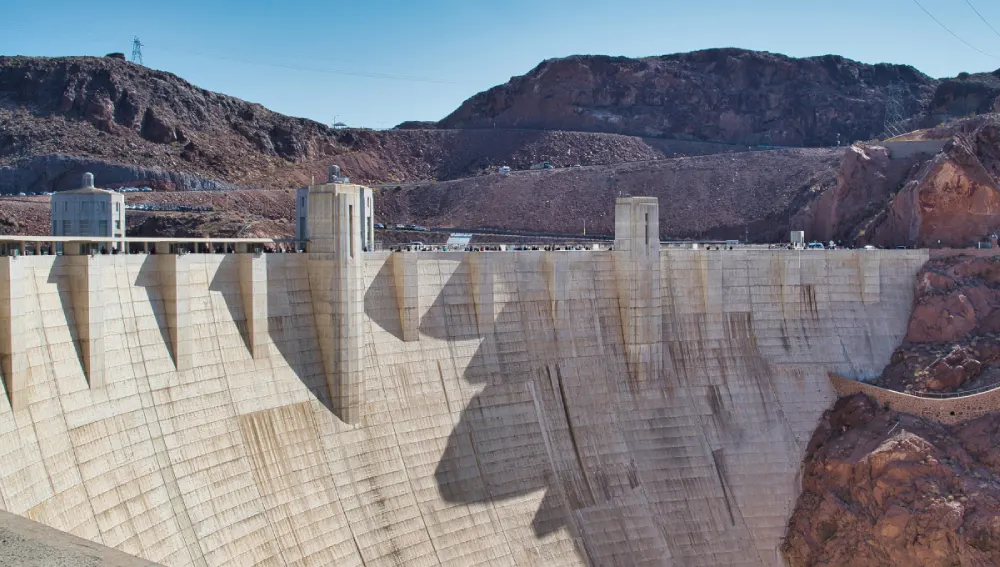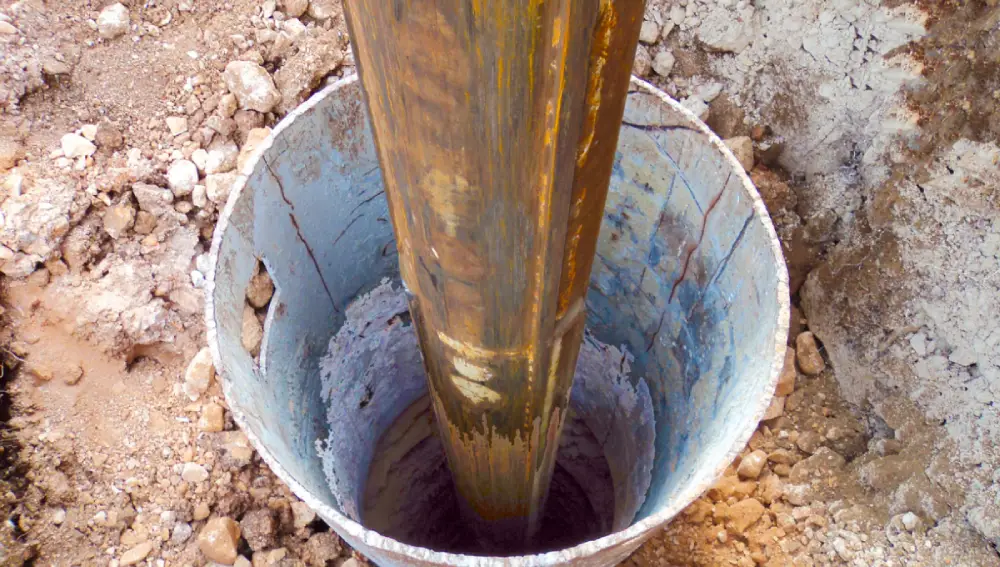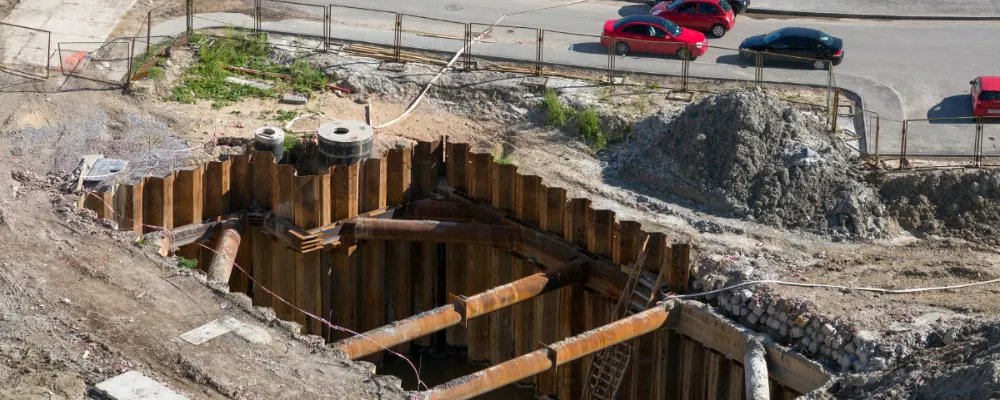Foundations are a crucial component of construction, providing stability and support to built structures. They can be deep or shallow, depending on the soil conditions and specific project requirements. This blog explores one of the oldest types of deep foundations, known as well foundation, including its meaning, types and benefits. Read on to learn more about it.
What is a Well Foundation?

A well-foundation is a form of deep foundation generally used for bridges, dams, and other underwater structures. Well-foundations were first initiated in India, and the Taj Mahal was built using the well foundation. Well-foundations are boxes made up of materials like metal, masonry or concrete, It is used to develop passive resistance against the horizontal forces at the top of the wall. It is stable and durable for construction. The main purpose is to distribute the structural load and reduce the risk of settlement of soil. It helps in bringing long-term stability.
Components of Well Foundation
Well foundations are generally built in parts and then floated to their final position. They consist of several components, which are explained as follows:
Cutting edge
The cutting edge is placed at the lowest part of the well foundation and. It can easily penetrate the soil. The design of the cutting edge is sharp and short to ensure quick soil or surface penetration.
Well curb
Well curb is a component of the well-foundation that brings stability to the base. It is generally a reinforced concrete ring beam placed above the cutting edge. It helps distribute the load evenly around the circumference.
Bottom plug
The bottom plug is a concrete layer. It is placed at the bottom of the well after it reaches the desired depth. It acts as a seal and provides a solid base which resists pressure from the bottom.
Top plug
It is a concrete layer placed at the top of the sand filling. Its solid surface helps distribute the load by providing a top seal to the well.
Steining
Steining refers to the walls of the well foundation. It is the main body of the well and is usually made up of reinforced concrete. It provides structural stability and integrity.
Well cap
The well cap is the top component of a well foundation, formed by an RCC slab. It covers the top of the well and distributes the load from the superstructure to the well foundation.
Types of Well Foundation

Open caisson
It is a type of deep foundation where both the top and the bottom cases are open during placement The top and bottom are later sealed with concrete. This typeIt is typically used in places such as bridges and foundations in rivers where underwater construction happens. It also has a cutting edge at the bottom and is constructed with the first portion of the shaft at the site. They are usually hollow in structure and create a deep foundation. The sinking is facilitated using cutting-edge components.
Floating caisson
Floating caissons are large hollow structures that are assembled on floating platforms. Reinforcement cages are created here and concrete is poured, then the entire structure is floated to its final location. It reduces the challenges faced in underwater construction by reducing the vibration, making it suitable for sensitive structures. It is used in offshore platform bridge piers and docks.
Pneumatic caissons
It is a closed type of casing that is used for underwater construction. During transportation to the bottom surface of water, it utilizes pressed air to keep the water out. Typical materials used in pneumatic caissons are steel or reinforced concrete. Unlike other types, it is closed at the top and open at the bottom during construction. To facilitate driving into the sea, this type is equipped with a cutting edge at the bottom. The compressed air helps create a dry environment inside the caisson. Pneumatic caissons help in construction in deep water conditions or places with difficult soil. It can be found at a depth of 40 m or more.
Well Foundation Shapes
Circular well
A circular well foundation has a circular cross-section to support heavy structures. It provides the minimum surface area for the given weight, leading to a great sinking effort. Circular wells are subject to lower pending stresses. This is due to the absence of sharp corners. It provides high structural strength. No file cap is required for circular well foundation.
Rectangular well
A rectangle-well foundation has a rectangular cross-section area. It has large piers when compared to square sections. The rectangular well foundation requires careful control to prevent the island from sinking.
Oblong well
Oblong well foundations have elongated rectangular or rectangular cross-sections. It requires careful handling to prevent tilting during sinking.
Advantages of well-foundation
The well foundation is suitable in a variety of soil conditions. It works well in both soft and unstable soil, . including loose sand, clay, and silt. The load distribution is even to the underlying soil.
The well foundation can support heavy vertical and horizontal loads. This is because they have a large pace and enable deep penetrations. It is relatively easy to construct and requires less excavation work.
Well foundations are provided with a larger cross-section area, with effective resistance to scouring. They are highly durable and can last hundreds of years with proper maintenance.
When compared to other deep foundation methods, the construction for well foundations is quick.They are an efficient way to create underground stability for structures like bridges and piers.
Disadvantages of well-foundation
Constructing a good foundation can be time-consuming and requires skilled labor and professionals who are experienced
During the construction process, it can face difficulties due to the presence of groundwater. There can also be delays.
The soil inspection is difficult at deep depths and also challenging to clean. Well foundation cannot generally be constructed on contaminated sites.
Deepwater has a high safety risk during the construction of a well foundation. It requires specialized equipment, which is not easily available and is affected by weather conditions.
It requires complex anchoring in tidal zones. A well foundation has difficulty accessing remote areas.
Conclusion
A well foundation is a vital solution for supporting heavy structures in construction, especially underwater. The well foundation is particularly useful in challenging environments. With complex adaptability, stability, and durability, it is one of the most reliable and suitable choices for ensuring structural quality in heavy construction. They are applicable for constructing bridges due to their longer lifespan and high success rate. Structures built across rivers or streams, such as railway bridges, pathways, and roads, often utilise well foundations. In areas with high water tables, conventional shallow foundations may not be effective. In these places, well foundation is required

